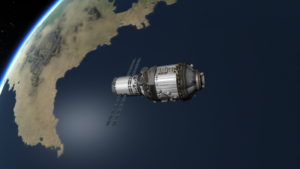
Chinese Space Station ‘Heavenly Palace 1’ May Turn Its Crashing Site Into Hell
As of now we can only say that when the Chinese Space Station will slam into Earth’s atmosphere. The name of the space station is ‘Heavenly Palace 1’.

The most accurate details of its expected crash on the earth through the earth’s atmosphere is expected to be around April 1 with plus or minus four days as a range. The accurate latest details were narrowed upon by multiple orbit watchers, which include the European Space Agency, the Center for Orbital and Reentry Debris Studies and also the academic researchers.
If put in other words, the spacecraft weighing about 18,740-pound (8,500-kilogram) is currently expected to blast out in a final blaze of glory anytime between March 28 and April 5.

The range narrowed upon may change, but latest details put off the possibility in recent days as Tiangong-1’s demise approaches.
The space station, which was launched in 2011 via radar as Earth’ gravity still continues to slowly pull more closely to home. It was first caught by The Fraunhofer Institute for High Frequency Physics and Radar Techniques recently.
Some important things to keep in mind about Tiangong-1’s re-entry:
It’s totally impossible to predict where it might crash land, as it was explained in a previous post, because it’s unlikely that it can be steered and is moving incredibly fast.
It could re-enter for a crash land anywhere between 43 degrees north and south of the equator, which is a huge swath of land and ocean stretching from the northern contiguous United States to Tasmania in the south. Congratulations, for Canada, you people are totally safe except for a little piece of Ontario.
It’s no guarantee that any parts of the space craft, Tiangong-1 will survive its scorching flight through the atmosphere.
If pieces do make it to the surface, they’ll likely fall in the ocean waters or the middle of nowhere. Only one person has ever reported being hit by falling space debris of such incidents. It was reported that it happened to a woman in Oklahoma and she was not injured.
If you do come across to see any parts of it, stay away and call authorities because it may contain toxic propellants like hydrazine.
If you see Tiangong-1 streaking across the sky, take a video shoot and tweet it to @EricCMack.
Stay tuned with latest updates as the Heavenly Palace’s fall from the heavens draws closer.
Tiangong-1 is a prototype space station, the first such initiative by the Chinese Government. Once in space the station serves as a manned laboratory and also as a test bed for demonstrates orbital rendezvous and docking capabilities. It was launched unmanned aboard a Long March 2F/G rocket on 29 September 2011.
You May Also Read: As A Pod Of 150 Whales Wash Ashore In Western Australia, Rescuers Try There Luck To Find Any Survivors